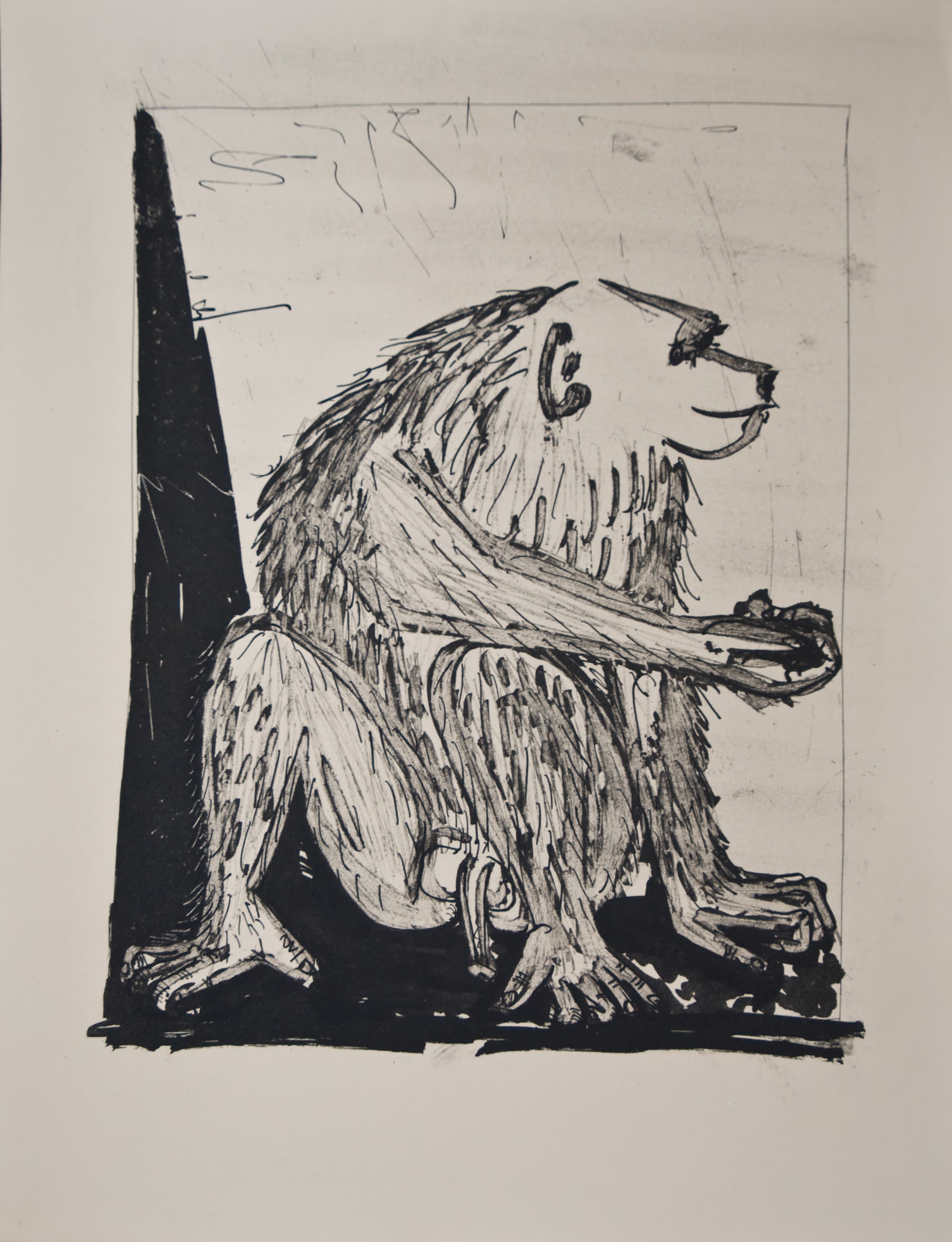
Pablo Picasso: Le Singe (The Monkey), 1936, Sugarlift aquatint, drypoint, and scraper, 14 3/8 x 11 inches
When Picasso relocated from the Montmartre-based Bateau Lavoir (shared with Max Jacob, among many other bohemians and artists), he upgraded to the kind of city-center flat affordable to an artist with new money, playing domestic with his then-girlfriend Fernande Olivier. Despite Fernande’s supposedly reigning status in the household, there was only one lady allowed free roam of Picasso’s in-home studio: Monina, his pet monkey.
One can imagine a melancholy Fernande, relatively neglected during this highly productive time in Picasso’s art-making, sighing over her journal as she wrote about Monina, who, “used to eat all her meals with Picasso and pester him incessantly,” though, she admits, “he bore with this and even enjoyed it. He would let her take his cigarette or the fruit he was eating. She would nestle up to his chest, where she felt quite at home.”*
An unexpectedly sweet image: work-absorbed Picasso, punctuating his self-consuming picture-making for a snuggle with his trickster pet monkey. Unlike his other love affairs, Monina is not a major subject of Picasso’s work. Her closest appearance is in Le Singe, a sugarlift aquatint print of a monkey Picasso created later in his career. That monkey is not Monina, but there is a gentle familiarity in its rendering that may speak to an image of her in the artist’s mind – an impression of her, resting against his heart.
It leads me to wonder: what kind of person might be uncovered if we read between the lines of Picasso’s visual diaries? We think we know this artist so well, with his anarchic, larger-than-life persona – but who might we discover if we take a step back from these big narratives, and consider the underdogs of his pictures?
Over the next couple of weeks, we seek to find out.
*Olivier, Fernande. Loving Picasso. Harry N. Abrams, 2001.
